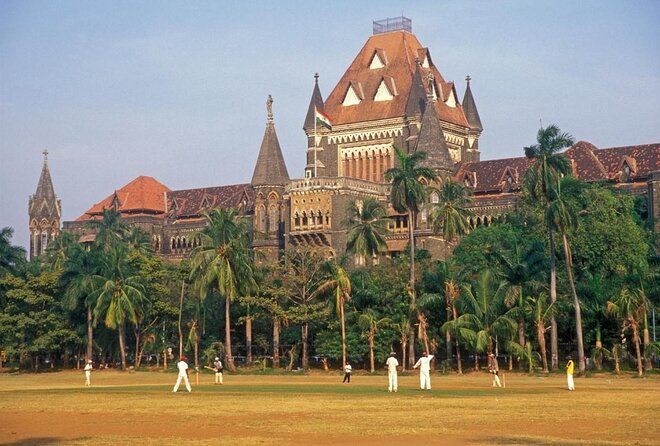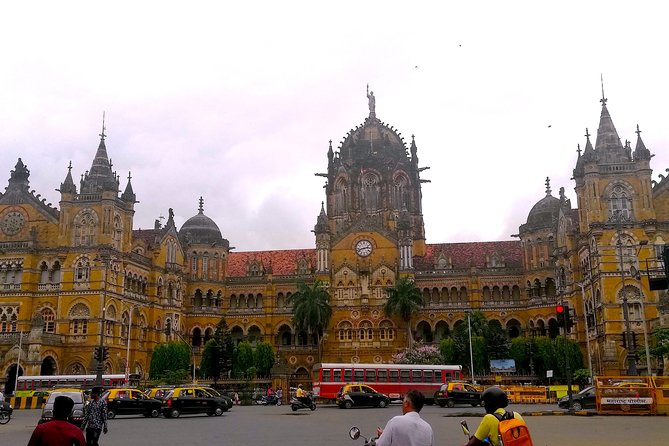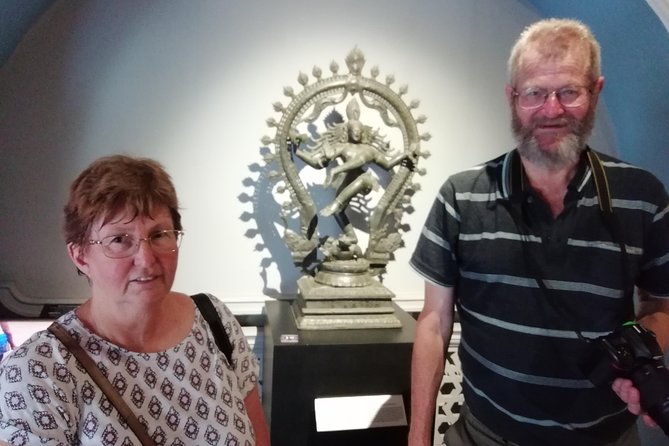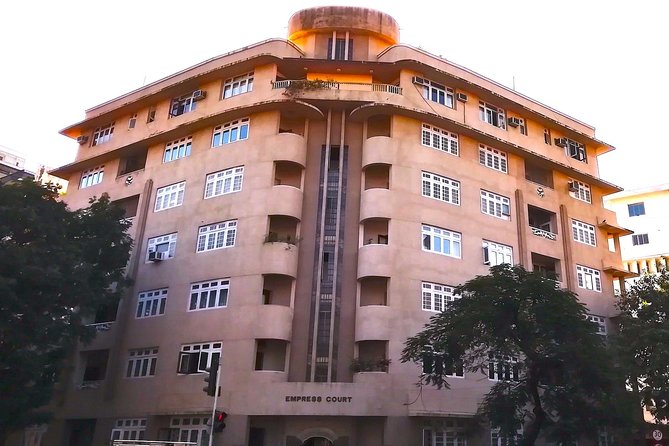Story of Mumbai Through Its Gothic & Art Deco Buildings
In the heart of Mumbai lie tales woven into the intricate facades of its Gothic and Art Deco buildings. Each structure whispers stories of a bygone era, where history meets innovation in a dance of architectural splendor.
From the majestic Rajabai Clock Tower to the sleek lines of the New India Assurance Building, these edifices stand as witnesses to Mumbai’s evolution. As the sun sets on the Arabian Sea, the shadows cast by these monuments beckon exploration, promising a glimpse into the city’s soul through its architectural masterpieces.
Key Points

- Gothic and Art Deco styles reflect Mumbai’s historical layers and architectural evolution.
- Colonial influences blend with local craftsmanship in Mumbai’s iconic buildings.
- Preservation challenges threaten the unique identity and historical significance of Mumbai’s architecture.
- Future trends focus on sustainable practices, technology integration, and adaptive reuse for heritage buildings.
Historical Background of Gothic Architecture

The intricate and soaring Gothic architecture style, characterized by pointed arches and ribbed vaults, emerged in Europe during the late Middle Ages as a stunning reflection of spiritual and artistic advancements.
This architectural evolution laid the foundation for the later Gothic revival, where buildings were designed with an emphasis on height and light, creating an awe-inspiring atmosphere.
The Gothic style, with its flying buttresses and intricate tracery, transformed the way cathedrals and churches were built, allowing for grander structures that reached towards the heavens.
The gothic revival movement, inspired by this historical background, brought back elements of this style in the 19th century, showcasing a renewed interest in the intricate details and verticality that defined the Gothic era.
Emergence of Art Deco Style

Emerging in the early 20th century, Art Deco style captivated the world with its sleek lines and geometric motifs, influencing architecture, design, and fashion.
In Mumbai, this architectural movement brought a wave of modernity to the cityscape. The evolution of Art Deco in Mumbai architecture can be seen in the bold shapes, vibrant colors, and intricate detailing of buildings like Eros Cinema and Regal Theatre.
These structures showcase the fusion of traditional Indian motifs with the contemporary Art Deco aesthetic, creating a unique visual identity for Mumbai. The streamlined forms and decorative elements of Art Deco buildings in Mumbai continue to stand as a testament to the city’s progressive spirit and rich architectural heritage.
Influence of Colonial Rule
During the era of colonial rule in Mumbai, influences from European architecture began to shape the city’s evolving architectural landscape, leaving a lasting mark on its structures and design aesthetics.
The colonial legacy is evident in the intricate detailing, grand facades, and ornate embellishments that adorn many buildings in Mumbai. British, Portuguese, and Dutch architectural styles blended with local craftsmanship, creating a unique fusion that characterizes the city’s architectural identity.
The urban development during this period saw the construction of administrative buildings, churches, and mansions that reflected the power and influence of the colonial rulers. These architectural marvels stand as a testament to Mumbai’s history and the interplay between colonial influences and indigenous architectural traditions.
Architectural Gems in Mumbai

In the bustling city of Mumbai, a treasure trove of architectural gems awaits discovery by enthusiasts and history buffs alike. Mumbai’s skyline is a mesmerizing blend of architectural trends, reflecting both its colonial past and modern influences.
From the intricate Gothic detailing of Chhatrapati Shivaji Terminus to the sleek lines of the Art Deco buildings along Marine Drive, each structure tells a story of the city’s evolution. These architectural marvels stand as a testament to Mumbai’s rich history and vibrant spirit.
The fusion of traditional craftsmanship with contemporary design elements showcases the city’s ability to adapt and thrive amidst changing times. Set out on a journey through Mumbai’s streets, and be captivated by the diverse array of architectural styles that paint a vivid picture of this dynamic metropolis.
Preservation Efforts and Challenges
Amidst Mumbai’s architectural splendor, the preservation of its historic Gothic and Art Deco buildings faces a delicate balance between conservation efforts and modernization pressures. Preservation challenges and restoration efforts include:
- Limited funding for maintenance and restoration projects.
- Lack of awareness among the general public about the historical significance of these buildings.
- Conflict between preserving the original architectural integrity and the need for modern amenities.
- Struggles with enforcing strict regulations to prevent unauthorized modifications.
- Ongoing debate on finding the right balance between preserving the past and adapting to present-day needs.
These challenges highlight the complex process of safeguarding Mumbai’s rich architectural heritage while navigating the demands of a rapidly evolving urban landscape.
Impact on Mumbai’s Identity
Mumbai’s architectural heritage, characterized by its Gothic and Art Deco buildings, plays a pivotal role in shaping the city’s unique identity. The colonial legacy of British rule left a lasting imprint on Mumbai’s skyline, with grand Gothic structures reflecting a bygone era. Simultaneously, the emergence of Art Deco architecture symbolizes the city’s transition into modernity and urban development.
These architectural styles intertwine to narrate Mumbai’s diverse history, showcasing a blend of tradition and progress. The fusion of intricate Gothic details with the sleek lines of Art Deco creates a visual tapestry that defines Mumbai’s charm. As the city evolves, these buildings stand as testaments to its rich past, contributing to a distinctive identity that resonates with locals and visitors alike.
Future Prospects and Trends

With urban development on the rise, the architectural landscape of Mumbai is poised for a dynamic evolution, showcasing innovative designs and sustainable practices.
- Emphasis on eco-friendly materials and green building technologies
- Integration of smart technology for energy efficiency and improved living standards
- Preservation and adaptive reuse of heritage buildings for modern purposes
- Collaboration between architects, urban planners, and environmental experts
- Incorporation of public spaces and green areas to enhance livability and community engagement
These future developments will shape Mumbai’s skyline, blending the old-world charm of Gothic and Art Deco structures with contemporary design evolution.
As the city progresses towards a more sustainable and aesthetically pleasing environment, residents and visitors can look forward to a harmonious fusion of history and modernity in its architecture.
Common questions
What Are Some Lesser-Known Gothic and Art Deco Buildings in Mumbai That Are Not Typically Included in Guided Tours?
Hidden gems in Mumbai include lesser-known gothic and art deco architectural marvels like Bombay High Court, David Sassoon Library, and Regal Cinema. These buildings offer unique insights into Mumbai’s rich history and architectural heritage.
How Do Local Residents Feel About the Preservation Efforts of Mumbai’s Architectural Gems?
Local perspectives on preservation challenges in Mumbai’s architectural gems vary. Some residents appreciate efforts to conserve history, while others feel modernization neglects heritage. Balancing progress with preservation remains a delicate task for the community.
Are There Any Specific Events or Festivals in Mumbai That Celebrate the City’s Gothic and Art Deco Architecture?
Architectural festivals and cultural events in Mumbai celebrate its Gothic and Art Deco architecture. Heritage walks and building restoration projects offer insights into the city’s rich history and architectural treasures, engaging both locals and visitors alike.
How Have Modern Developments and Urbanization Affected the Conservation of Historic Buildings in Mumbai?
Modern developments and urbanization in Mumbai have impacted the conservation of historic buildings. Gentrification can lead to restoration but also risks altering the original character. Community engagement plays a vital role in balancing progress with preserving the city’s architectural heritage.
What Are Some Unique Features or Architectural Details of Mumbai’s Gothic and Art Deco Buildings That Visitors May Overlook?
Visitors often overlook intricate carvings on Mumbai’s Gothic structures and geometric motifs on Art Deco buildings. Preservation challenges include weathering on delicate facades. Unexplored gems include hidden courtyards and historical significance in each meticulous design.
Last Words
Step back in time and witness the breathtaking beauty of Mumbai’s Gothic and Art Deco buildings. These architectural wonders not only showcase the city’s rich history but also highlight its unique identity.
From the intricate details of Chhatrapati Shivaji Terminus to the elegant facades of Eros Cinema, each structure tells a story waiting to be explored.
As efforts continue to preserve these gems, Mumbai’s skyline remains a testament to the city’s enduring legacy of design and innovation.